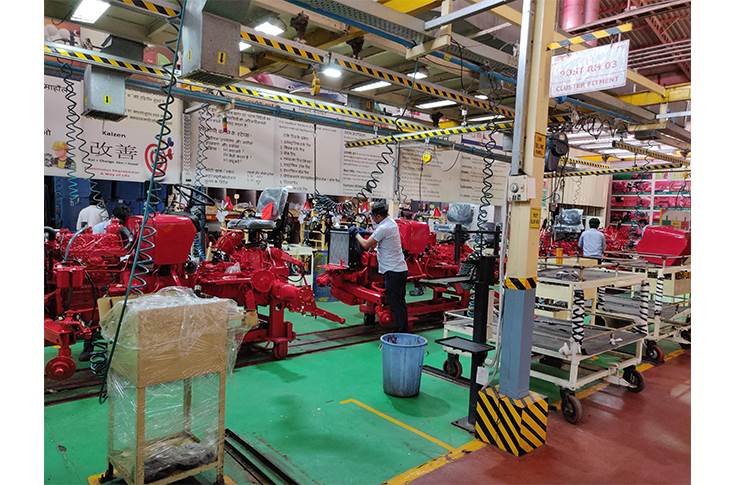The coronavirus pandemic has ensured that year 2020 will be remembered by all. For Hemant Sikka, who took on the role of president – farm equipment sector, Mahindra & Mahindra (M&M) on April 1, there are a couple of more reasons. The seasoned professional took on the new role, with a problem that he isn’t complaining about though. His problem is to meet a level of market demand not seen in a long time.
Last month was the best-ever July, M&M’s tractors saw in terms of sales. The OEM sold 24,463 units, a 28 percent year-on-year growth. A good demand was expected from the beginning of the current financial year, but the trend has trend out to be stronger than perhaps what the industry was prepared for. “I would use the word ‘ferociousness’ for the demand trend. We were expecting robust demand but not like the demand that we are facing. So, currently it’s not really a demand challenge at all. It’s a supply challenge,” Sikka told Autocar Professional in an interview earlier.

It’s a challenge for Sikka and his team because the country’s pandemic-hit supply chain is still some time away from functioning smoothly. “None of us have faced a situation of starting a factory after six weeks. I have never faced something like that,” says Sikka about the experience of restarting the plants in May. Some of his earlier responsibilities helped Sikka to develop strong relations in the supplier fraternity, and also become a supply chain expert himself. He’s leveraging both to help minimise production disruption in M&M’s tractor plants, some of which are running at full capacity.
So, what is fuelling the unusually high demand trend in the tractor industry? For starters, it’s the early onset of monsoons in North India. Key factors related to the crop are growth (around 6 percent) in Rabi crop output, procurement by the government at higher MSP (Minimum Support Price) than earlier. MSP for Rabi crops for the marketing season 2020-21 was hiked by at least 1.5 times of the all India weighted average cost of production. Sikka says that the other positive factors are good reservoir levels and proper progression of the monsoon season.

“If you have 2 factors playing positive and 3 factors playing negative then you get some kind of demand. If it’s 3 positive and 2 negative you get another kind of demand, but when you have 5 factors positive and zero negative then there’s a different demand. So, everything’s coming together now,” says Sikka.
With the positive developments, including better finance options, the tractor industry could be the only motorised vehicle industry to see good growth in FY2021. This is after a 10 percent drop in FY2020. As that happens, M&M is also gearing up to tap more opportunities. It is developing a platform named ‘K2’ in collaboration with Mitsubishi, where M&M is the single largest shareholder. Multiple lightweight projects are being developed on the platform. Sikka says the ‘K2’ platform is a “very large configurable platform”, which will spawn products for four territories – India, USA, Japan, and South East Asia.

As the semi-urban/rural markets are leading the automotive industry growth, tractors are leading the game for M&M. M&M domestic operations are on a strong wicket, though an overseas unit or two may have to perform better. M&M is currently in the process of doing detailed analyses of each of its Group companies in order to decide regarding the continuation of investments in each, and enhance the organisation’s overall performance.
As M&M’s tractor business, along with the rest of the industry, enjoy strong gains, Sikka also counts the strong support he has received from his team in order to take on the role of being at the helm of affairs in M&M’s farm equipment sector. 2020 is Sikka’s 30th year in the automotive industry and the 21st year at M&M. Also, it’s the first time he has taken up a new professional role sitting at home. It’s highly unlikely that he will ever forget the year 2020.
/news-national/mahindra-&-mahindra-sees-robust-demand-for-the-tractor-industry-this-year-56930 Mahindra & Mahindra sees robust demand for the tractor industry this year In July, M&M clocked a record 28 percent year-on-year growth in tractor sales. https://www.autocarpro.in/Utils/ImageResizer.ashx?n=http://img.haymarketsac.in/autocarpro/287fd406-a5f2-454c-8a2a-dd9a8362e410.jpg
